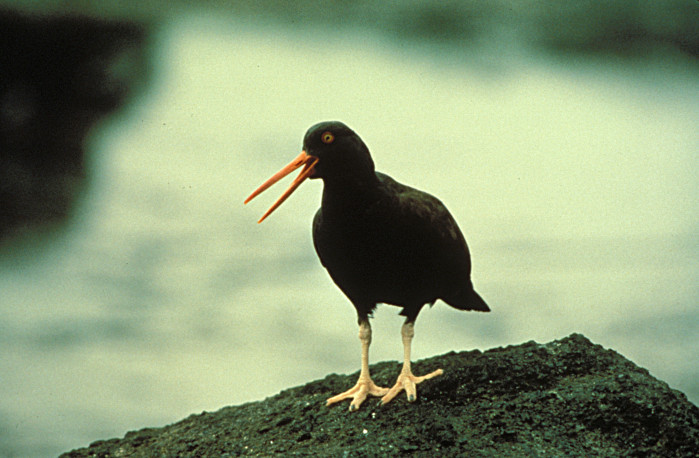The problem with estimations is that, well, they are just guesses. Educated predications, sure, but still guesses.
Pining for some hard empirical data, the U.S. Fish and Wildlife Service recently launched the first ever black oystercatcher survey for California. Apparently, scientists have a handle on the number of these birds with the hypnotic yellow eyes living in Alaska and Canada…but strangely, not California where they inhabit rocky shores and feast on mussels, limpets and other invertebrates.
The initial result of this survey presents higher numbers for the orange-beaked birds than previous estimations. (Hard data does have its rewards.)
According to Audubon Magazine:
… [Results of] the state’s first-ever oystercatcher survey this past June…was surprisingly positive: More than 150 volunteers counted 175 nests and 1,346 birds, far more than the previous estimate of 1,000.
Overall, the survey is trying to protect and prevent the black oystercatcher from being placed on the Endangered Species list – more oystercatchers also are a gauge as to how the intertidal landscape is faring. More oystercatchers – better marine ecosystem.
Audubon California’s seabird conservation coordinator, Anna Weinstein, explains how durning the census-taking, she was surprised to see oystercatchers nesting close to western gulls.
“One volunteer scientist hypothesized that black oystercatchers nest near western gulls because they chase away predators like ravens and peregrine falcons….As western gulls, California gulls, and peregrine falcons increase, we’re seeing real defense on the oystercatchers’ part. Their bright orange beaks are long, they’re a large-bodied bird, and they’re aggressive. They don’t just sit there and let their babies get plucked off. It’s really nice to see because it gives you a sense that as their world changes, they at least have some tools to cope.”
Photo: U.S. Fish and Wildlife

